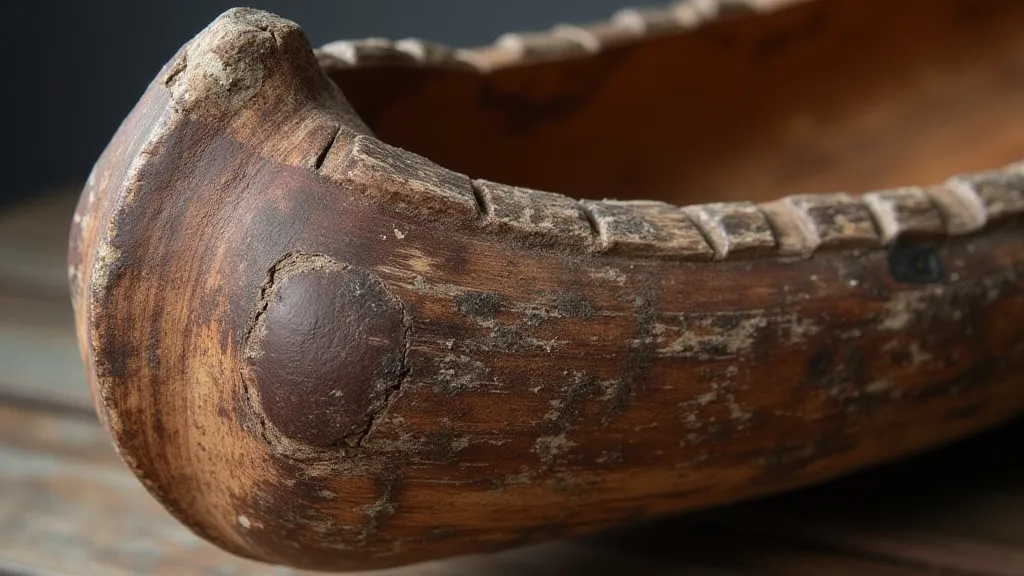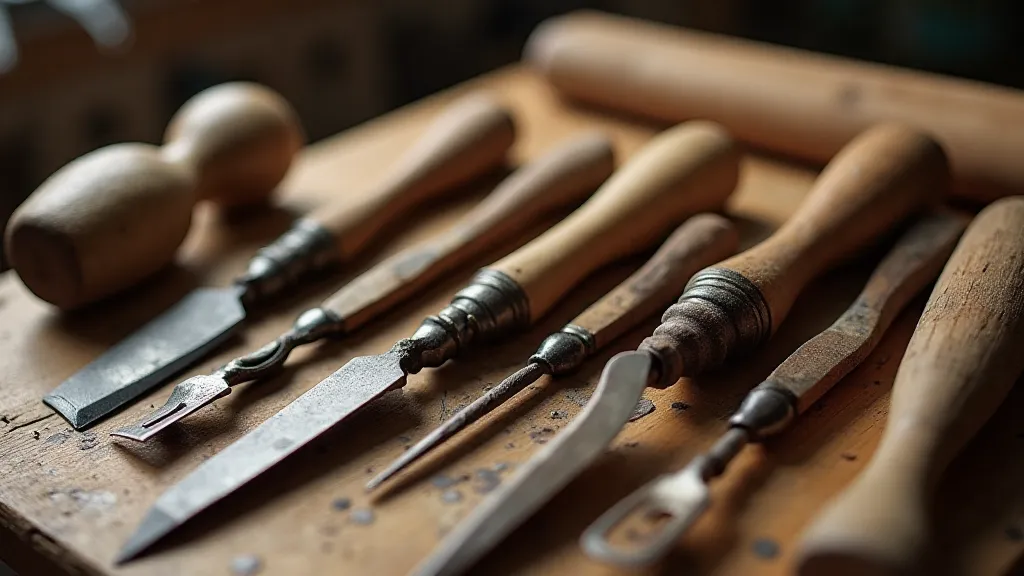From Branch to Bearing: The Cultural Significance of Wood Species Selection
Wood carving isn’t simply about manipulating a material; it's a conversation between the sculptor, the tree, and the culture that shapes both. For centuries, artisans haven’t just chosen wood for its workability, but for its inherent qualities—strength, grain, color, and, crucially, its symbolic resonance. This isn't a new concept. Think about the antique accordion. The choice of wood, the meticulous joinery, the careful voicing of the reeds – all contribute to an instrument that evokes a sense of heritage, of tradition, of connection. Just as the accordion’s wood sings with the echo of dances and celebrations past, so too does the wood chosen for carving hold within it the whispers of generations.
My grandfather, a cabinetmaker, used to say, “A tree remembers everything it’s seen.” It seemed like fanciful talk at the time, but as I’m immersed in the world of wood carving – specifically, studying the differences in regional carvings – I find his words increasingly poignant. Each species carries a history, a climate, a set of environmental pressures that subtly influence its characteristics and, by extension, the stories it can tell when rendered into art. Selecting the right wood wasn't just about making a beautiful traditional carving; it was about honoring the place and the people who relied upon it.
The Heartwood of the Black Forest: Lime and its Lore
Consider the Black Forest in Germany, a region renowned for its intricate wood carvings, particularly those adorning furniture, clocks, and religious figures. Here, lime (basswood, linden) reigns supreme. Its fine, even grain, ease of carving, and lack of strong grain make it exceptionally suited for delicate details. But beyond practicality, lime held a powerful association with fertility and protection in Germanic folklore. Lime groves were often sacred, believed to be inhabited by spirits, and carved lime figures were seen to bring good fortune to the household. The very act of selecting lime wasn't just a technical decision; it was a ritual, a connection to ancestral beliefs.

Oak's Strength and Status in Celtic and Anglo-Saxon England
Moving across Europe, the picture changes. In Celtic and Anglo-Saxon England, oak held a position of paramount importance. A symbol of strength, endurance, and longevity, oak was deeply intertwined with mythology and royal authority. The Druids held oak trees sacred, and the use of oak in carvings frequently reflected this status. Royal crests, architectural details on churches and castles, and the handles of ceremonial swords were often crafted from oak, visually demonstrating power and connection to ancient traditions. The very act of carving oak was a show of respect, a commitment to permanence, and an acknowledgment of the tree's profound significance. The harder wood presented a greater challenge, but the message embedded within the final carving was all the more impactful.
I recall an elderly artisan I met in Somerset, England, demonstrating the challenges of working with old oak. "You have to *listen* to the wood," he’s told me, his hands calloused from years of wrestling with the stubborn grain. "It fights back. It demands respect." He was speaking not only of the physical properties of the wood but also of the spiritual weight it carried. A careless hand could ruin the piece, but a skilled craftsman could coax a story of enduring resilience from its depths.
The Serenity of Cherry in Pennsylvania Dutch Carving
Across the Atlantic, in the Pennsylvania Dutch countryside, a different aesthetic took root. Here, cherry, a wood that offered a balance between workability and a warm, reddish hue, became a favorite. The Pennsylvania Dutch, with their Anabaptist heritage and emphasis on simplicity and functionality, favored carvings that were often practical and charmingly rustic. Woodenware, butter molds, and simple decorative items were frequently crafted from cherry, reflecting the values of the community. While not laden with the overt symbolism of oak, cherry embodied a quiet dignity and a sense of groundedness, mirroring the values of the people who carved it.
The reddish tones of cherry also offered a pleasing contrast to the often-muted colors of the Pennsylvania Dutch palette, highlighting the carvings’ intricate details. This subtle use of color demonstrates a thoughtful approach to design, one that prioritizes both beauty and practicality. The enduring popularity of cherry in this region is a testament to its ability to embody the cultural values of a community.
The Delicate Dance of Cypress in Louisiana Folk Art
Venturing further into the American South, the landscape dictates a new set of preferences. In Louisiana, cypress, a wood naturally resistant to rot and insects due to its water-saturated environment, became a staple in folk art and utilitarian objects. Carved pirogues (dugout canoes), furniture, and decorative items were often crafted from cypress. The wood’s distinctive “alligator eyes” – small, dark knots – added a unique character to the pieces, reflecting the natural beauty of the bayous. While not carrying overt symbolic weight like oak or lime, cypress represented adaptability and resilience in the face of challenging environmental conditions.

Beyond Practicality: The Essence of Place
Ultimately, the choice of wood for carving wasn’t solely about its properties. It was a reflection of the landscape, the climate, the culture, and the beliefs of the people who shaped it. Each species carries a history, and the carvings themselves become tangible links to the past. Understanding these subtle nuances isn’t just an academic exercise; it's a pathway to a deeper appreciation of the artistry and the cultural significance of woodworking. It’s akin to understanding the delicate voicing of the reeds in an antique accordion—a knowledge that illuminates the instrument's soul.
The meticulous selection of wood for carving showcases a profound respect for the natural world and a commitment to preserving cultural heritage. By recognizing the stories embedded within each piece of wood, we can gain a new understanding of the people who created them, and the places that shaped their lives. This connection transcends mere craftsmanship; it's a celebration of the enduring power of tradition and the beauty of the natural world.






